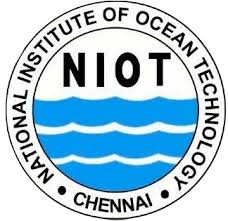Indigenous submersible vehicle Matsya 6000 will be ready as planned for Samudrayaan: NIOT Director

- Country:
- India
The indigenously developed manned underwater submersible vehicle capable of taking three humans to a depth of 6,000 m, Matsya 6000, will be ready as originally planned for its launch in 2024 for the Samudrayaan Mission, a top official of the National Institute of Ocean Technology (NIOT), Chennai, said on Tuesday.
The manned submersible, designed to carry three people in a 2.1-meter diameter Titanium Alloy Personnel Sphere, is being developed by the Ministry of Earth Sciences and NIOT, Chennai, under the aegis of Deep Ocean Mission. It will have an operational endurance of 12h and systems to support emergency endurance up to 96h for deep ocean exploration of non-living resources such as polymetallic manganese nodules, gas hydrates, hydro-thermal sulfides, and cobalt crusts, located at a depth between 1,000 and 5,500 meters.
“We are in the process of developing a scientific human submersible called Matsya 6000 for the Samudrayaan Mission. God and government willing this will be done by 2024,” G A Ramadass, Director of the institute said while speaking at the Oceans 2022 Chennai, organized by the IIT Madras and NIOT, Chennai, on behalf of Institution of Electrical and Electronics Engineering Ocean Engineering Society (IEEE - OES) and Marine Technology Society (MTS) at IITM Research Park here.
In October last year, Union Minister of State, Science & Technology and Earth Sciences Jitendra Singh launched India’s first and unique manned Ocean Mission Samudrayaan at a function here. Sea trials of 500 meter rated shallow water version of the manned submersible are expected to take place in the last quarter of 2022 and the Matsya 6000, the deepwater manned submersible will be ready for trials by the second quarter of 2024, he had said.
“We have built remotely operated vehicles and mining machinery,” Ramadass said and recalled that the first joint venture project was with the IIT Madras on extracting energy from ocean waves.
Following successful studies on ocean thermal energy conversion, the NIOT, Chennai, installed three desalination plants in Lakshadweep Islands to quench the thirst of the islanders. “We are trying to install 6 more desalination plants and our technology (low-temperature thermal desalination plant) will be one of its kind in the world,” Ramadass added.
Noting that IIT Madras was committed to developing ocean technology, Prof V Kamakoti, Director of IITM, informed that a large ocean center being set up on the institute’s campus in Thaiyur, will be ready by this time next year.
Madhu Nair, chairman cum managing director of Cochin Shipyard Ltd, called for measures to create technology and solutions for the larger wellbeing of mankind rather than mere exploiting natural resources.
Christopher Whitt, president, IEEE-OES, Prof Ashok Jhunjhunwala, chief executive, IITM Research Park, Prof M Atmanand, co-chair Oceans 2022, and Prof S A Sannasiraj, co-chair Oceans 2022, spoke. Madhu Nair released a book: Littoral Drift for the east coast of India, on the occasion.
(This story has not been edited by Devdiscourse staff and is auto-generated from a syndicated feed.)
- READ MORE ON:
- hydro-thermal
- Institution of Electrical and Electronics Engineering Ocean
- Prof M Atmanand
- Oceans 2022 Chennai
- Earth
- State
- Science & Technology
- Prof V Kamakoti
- Christopher Whitt
- Lakshadweep Islands
- Marine Technology Society
- Ministry of Earth
- IITM
- G A Ramadass
- NIOT
- Cochin Shipyard Ltd
- IEEE-OES
- Jitendra Singh
- Prof Ashok Jhunjhunwala
- Madhu Nair










